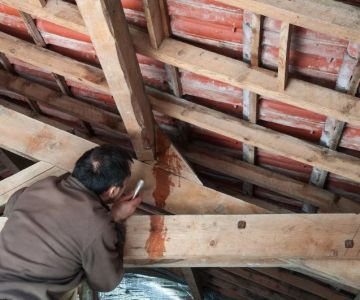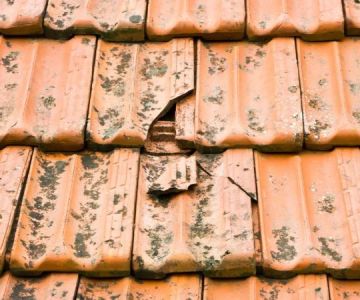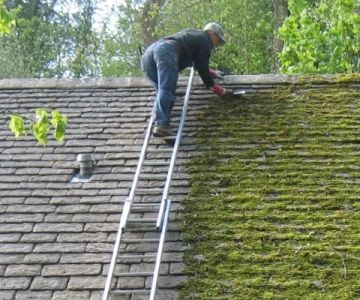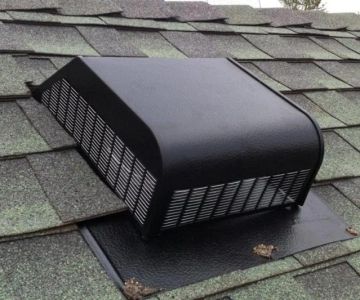
- - Introduction: Understanding Roofing Warranties
- - 1. What is a Roofing Warranty Transfer?
- - 2. How Does a Roofing Warranty Transfer Work?
- - 3. Benefits of Transferring the Roofing Warranty
- - 4. Steps to Transfer Your Roofing Warranty
- - 5. Common Questions About Roofing Warranty Transfers
Understanding Roofing Warranties
When it comes to buying or selling a home, the condition of the roof is one of the most critical factors that potential buyers consider. To protect both the buyer and seller, roofing warranties are often put in place to ensure that the roof remains in good condition for years to come. But what happens when a home is sold, and there's a roofing warranty in place? Can that warranty be transferred to the new homeowner? In this article, we’ll explore roofing warranty transfers and their importance in the real estate market.

Modern Roofing - Roofing Contractors
KearneysvilleJefferson CountyWest Virginia
50 Steeley Way, Kearneysville, WV 25430, USA
1. What is a Roofing Warranty Transfer?
A roofing warranty transfer allows the original homeowner to pass on the remaining coverage of their roof warranty to the new homeowner when the house is sold. This transfer ensures that the new owner can enjoy the benefits of the warranty for the remainder of the coverage period. Roofing warranties often cover defects in materials or workmanship, and some also include labor for repairs, making them a valuable asset during a home sale.
1.1 Types of Roofing Warranties
There are typically two types of roofing warranties: manufacturer warranties and workmanship warranties. Manufacturer warranties cover defects in the roofing materials themselves, while workmanship warranties cover the installation of the roof. Some companies offer transferable warranties, while others do not, so it’s essential to understand the details of your specific roofing warranty before selling your home.
2. How Does a Roofing Warranty Transfer Work?
The process of transferring a roofing warranty varies depending on the terms of the warranty agreement and the roofing company involved. In general, the homeowner needs to contact the roofing company to request a transfer. Some companies may require proof of roof maintenance or a formal request in writing to initiate the transfer.
2.1 Manufacturer Warranty Transfer
For manufacturer warranties, the transfer process usually requires filling out a form provided by the manufacturer. Some manufacturers may charge a small fee for transferring the warranty, while others may offer it as a complimentary service. Typically, the new homeowner will need to provide their contact information and the roof’s installation details to finalize the transfer.
2.2 Workmanship Warranty Transfer
Workmanship warranties, on the other hand, are often more straightforward to transfer. Since they cover the labor of the roofing company that installed the roof, the company may simply need to verify that the roof was installed according to their specifications. In some cases, a roof inspection may be required before the warranty is transferred.
3. Benefits of Transferring the Roofing Warranty
Transferring a roofing warranty when you sell your home can be a significant selling point, especially for buyers who are concerned about the potential costs of roof repairs or replacement. Here are some key benefits of transferring your roofing warranty:
3.1 Added Value to Your Home
A transferable roofing warranty adds value to your property by assuring the buyer that the roof will be covered in the event of a problem. This can make your home more appealing to potential buyers and may help it sell faster, especially in a competitive market.
3.2 Peace of Mind for Buyers
For buyers, a roofing warranty transfer provides peace of mind knowing that any issues with the roof will be addressed without additional costs. This added protection can make a big difference, particularly for first-time homebuyers who may be unfamiliar with roofing systems and the potential costs of repairs.
3.3 Simplified Transaction
Having a roofing warranty in place simplifies the transaction process for both the seller and the buyer. It reduces the likelihood of disputes over roofing issues after the sale, providing a smoother, more secure transfer of ownership.
4. Steps to Transfer Your Roofing Warranty
Transferring a roofing warranty is generally a straightforward process, but it does require attention to detail. Here are the steps you should take to transfer your roofing warranty:
4.1 Review Your Warranty Terms
Before initiating a transfer, carefully review your roofing warranty to ensure that it is transferable. Check the terms and conditions for any restrictions, fees, or requirements for transferring the warranty to a new homeowner.
4.2 Contact the Roofing Company
Contact the roofing company or manufacturer to inquire about the warranty transfer process. Ask for any required documentation or forms, and make sure to follow their instructions precisely to avoid any delays or issues with the transfer.
4.3 Complete the Transfer Documentation
Once you have all the necessary information, complete the required transfer documentation. This may include filling out forms, providing the new homeowner's details, and possibly scheduling a roof inspection if required.
4.4 Notify the Buyer
Once the transfer is complete, notify the buyer that the roofing warranty has been transferred. Provide them with any necessary documentation or receipts, so they have proof of the warranty coverage in case they need it in the future.
5. Common Questions About Roofing Warranty Transfers
Here are some frequently asked questions about roofing warranty transfers:
5.1 Does a Roofing Warranty Cover Roof Damage?
A roofing warranty typically covers defects in materials or workmanship, but not damage caused by external factors such as storms or poor maintenance. Be sure to understand the specific coverage provided by your warranty before transferring it.
5.2 Can a Roofing Warranty Be Transferred Multiple Times?
Most roofing warranties can only be transferred once, but some manufacturers allow multiple transfers. Check with the roofing company to understand the limits on the transferability of your warranty.
5.3 Are There Fees for Transferring the Warranty?
Some manufacturers may charge a small fee to transfer a warranty, while others provide this service for free. Always inquire about any fees before initiating the transfer to avoid surprises.
In conclusion, a roofing warranty transfer can provide valuable protection for both the buyer and seller during a home sale. By understanding how the transfer process works and following the necessary steps, you can ensure a smooth and beneficial transaction for everyone involved. For more information about roofing warranties and services, visit BeachCo Roofing Hub.








 Hadden Home Improvement5.0 (3 reviews)
Hadden Home Improvement5.0 (3 reviews) MD Contracting & Roofing5.0 (49 reviews)
MD Contracting & Roofing5.0 (49 reviews) Jersey Pro Construction4.0 (39 reviews)
Jersey Pro Construction4.0 (39 reviews) Nuve construction LLC5.0 (4 reviews)
Nuve construction LLC5.0 (4 reviews) Josh's Construction4.0 (105 reviews)
Josh's Construction4.0 (105 reviews) New-Gen Roofing & Siding5.0 (34 reviews)
New-Gen Roofing & Siding5.0 (34 reviews) How to Install Roof Ice and Water Shield on Complex Roof Details
How to Install Roof Ice and Water Shield on Complex Roof Details How to Repair a Roof Leak from a Rooftop Observatory or Dome
How to Repair a Roof Leak from a Rooftop Observatory or Dome How to Choose a Roof Color for a House with Dark Siding – BeachCo Roofing Hub
How to Choose a Roof Color for a House with Dark Siding – BeachCo Roofing Hub How to Repair a Roof Leak in a Building with a Fabric Tensile Roof Structure
How to Repair a Roof Leak in a Building with a Fabric Tensile Roof Structure How to Choose a Roofing Contractor That Handles Permits and Inspections
How to Choose a Roofing Contractor That Handles Permits and Inspections How Much Does It Cost to Repair a Roof Leak Around a Vent Pipe?
How Much Does It Cost to Repair a Roof Leak Around a Vent Pipe?